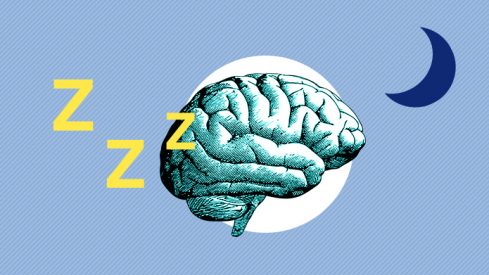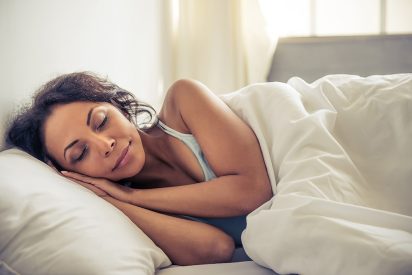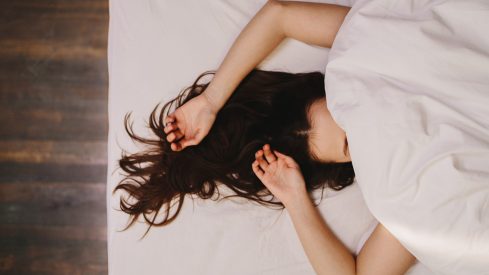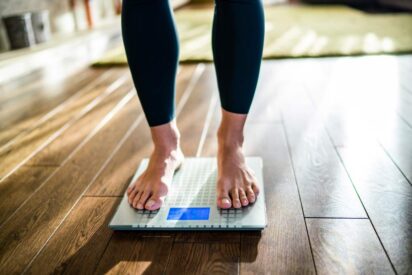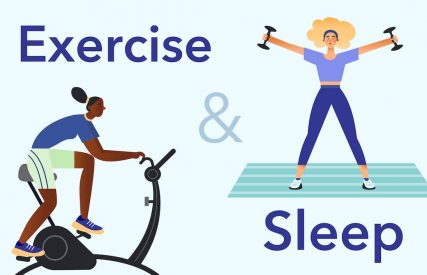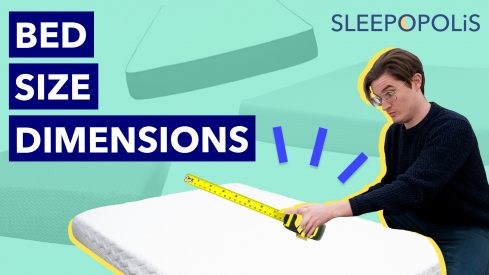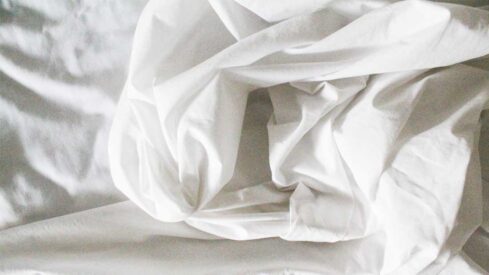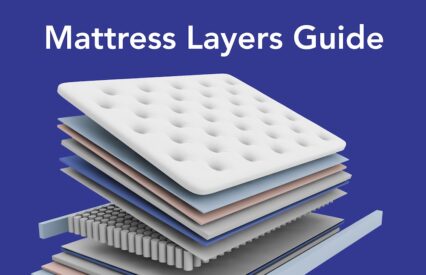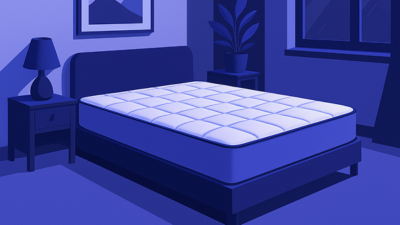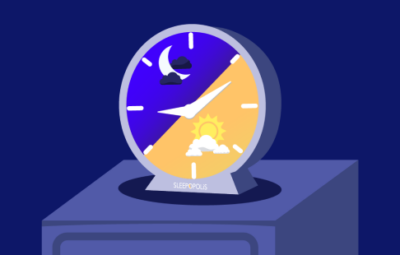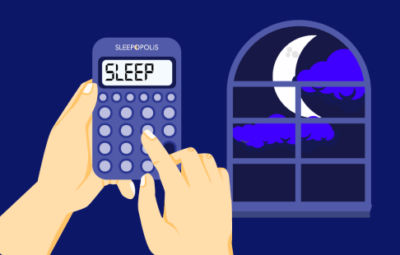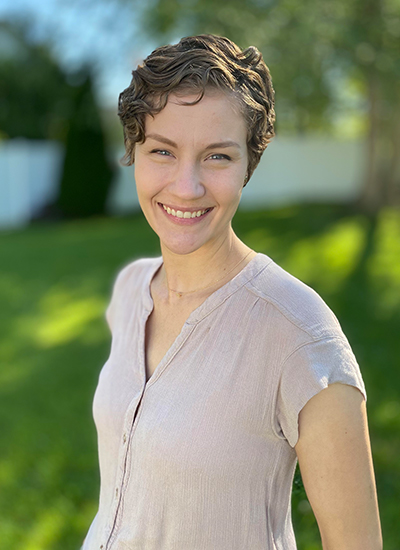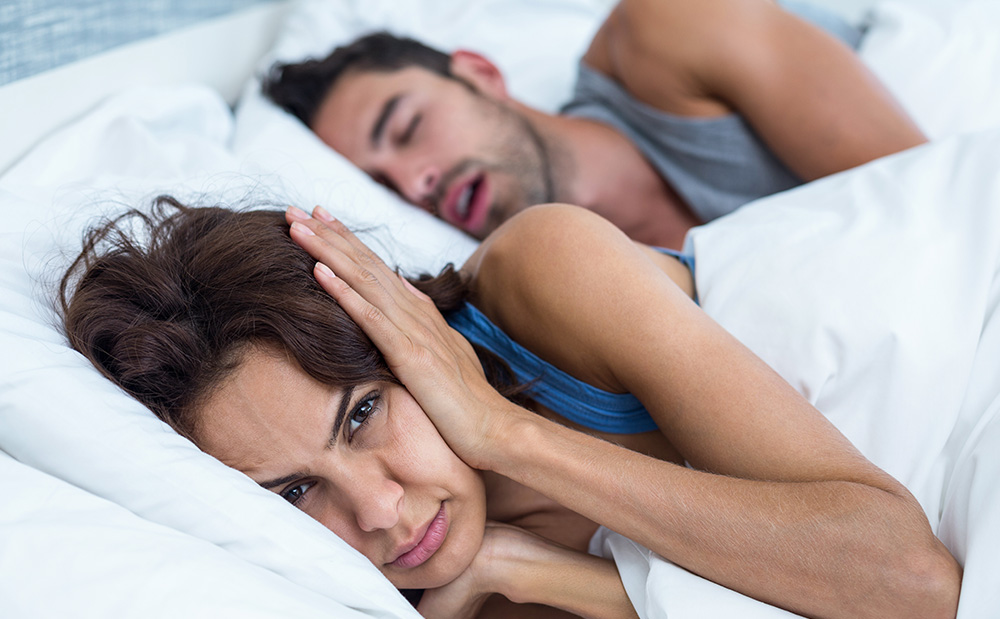
You may have exercised for strength, slimming, and stress relief, but did you know you can try exercises for snoring? It’s estimated that around 90 million Americans snore, many of whom may wish to find ways to stop. (1) Snoring can sometimes be a symptom of a sleeping disorder called sleep apnea, a condition that interrupts breathing during sleep. (2) While snoring exercises alone may not cure sleep apnea, combined with other treatments, they can help lessen symptoms, like muting your nighttime noises (or at least lowering the volume). (3) Read on to find out how exercises for snoring work and how to try them out.
Note: The content on Sleepopolis is meant to be informative in nature, but it shouldn’t be taken as medical advice, and it shouldn’t take the place of medical advice and supervision from a trained professional. If you feel you may be suffering from any sleep disorder or medical condition, please see your healthcare provider immediately.
Long Story Short
- Some people successfully lessen snoring by doing mouth, face, jaw, and throat exercises every day.
- While these exercises can help improve sleep apnea symptoms, they are not a substitute for traditional medical treatments.
- Do your exercises daily for maximum benefit, but be sure to tell your healthcare provider about any regular snoring.
What Causes Snoring?
Why do we snore? When we breathe in and out, air rushes through our mouth, throat, and lungs (airways) with no obstacles. (4) However, when your airways get partially blocked, the air movement rattles tissues around and creates (drumroll, please) a snore. (5)
Many factors can cause this airway blockage, like how your mouth and sinuses are built, how much alcohol you’ve had, seasonal allergies, a cold virus, or weight gain.(5) This partial blockage causes the incessant noises we call snoring, but we’re dealing with sleep apnea when your airways get fully blocked. (6)
What Causes Sleep Apnea?
Sleep apnea and snoring often go hand-in-hand. (2) Where snoring comes from the resistance in airflow from in-the-way tissues, sleep apnea takes that one step further: the tissues create significant flow limitation or resistance that pauses breathing and lowers oxygen levels, says Dr. Andrew Namen, M.D., American Academy of Sleep Medicine spokesperson and medical director of the Wake Forest Sleep Program. (6)
There are a few different types of sleep apnea, but the most common is called “obstructive sleep apnea,” or OSA. So, when you read “sleep apnea” in this article, we’re talking about OSA. Plenty of things can put you at a higher risk for OSA, including: (2)(6)
- Extra weight
- Narrow airway
- High blood pressure
- Nasal congestion
- Smoking
- Diabetes
- Being male
- Family OSA history
- Asthma
Whether or not your sleep apnea or snoring comes from weak muscles, it certainly can’t hurt to try some oral gymnastics and see if they help.
Mouth Exercises to Stop Snoring
As promised, below are some exercises that may help you stop snoring — Namen suggests exercises like vowel repetition, tongue exercises, and jaw exercises. Give them a read-through, but fair warning: it’s hard not to try them as you go. The fancy term for these exercises is myofunctional therapy, Namen tells Sleepopolis, which can include vowel repetition, tongue movements, and the other exercises below, which may improve snoring. (3) (7)
Afterwards, we’ll explain how these mini-workouts help your snores chill out.
Throat Exercise
This exercise can strengthen the muscles around your throat.
Throat Exercise: Vowel Repetition
- Say “A” out loud for several seconds. (It should sound like “Aaaaaaaaaaaaaaay.”)
- Repeat with the letter E.
- Repeat with I.
- With O.
- With U.
- Repeat the above several times.
You can leave “Y” out of this exercise (just don’t tell your 1st grade teacher). Notice how your throat and tongue move slightly with each distinct sound. Repeat however long you want until your throat gets tired. (This is a good one to try in the car.)
Tongue Exercises
You have a lot of options for strengthening your tongue.
Tongue Exercise #1: Tongue Slide
- Place the tip of your tongue against the back of your top front teeth.
- Slide it back as far as you can.
- Repeat for three minutes per day.
Tongue Exercise #2: Tongue Aerobics
- Stick out your tongue.
- Try to touch the tip of your nose with your tongue tip and hold for 10 seconds.
- Try to touch your chin with your tongue tip and hold for 10 seconds.
- Stretch your tongue to the left and (you guessed it) hold for 10 seconds.
- Stretch your tongue to the right and hold for 10 seconds.
- Repeat these steps 10 times.
Tongue Exercise #3: Tongue Push Up
- Place the tip of your tongue against the back of your front top teeth.
- Open your mouth, keeping your tongue on the roof of your mouth (it’s okay if it slides back a little).
- Close your mouth and repeat 10 times.
Tongue Exercise #4: Tongue Stretch
- Stick your tongue straight out in front of you as far as it will go.
- Hold for 10 seconds.
- Relax and repeat five times.
- Try to increase the hold time every day.
Jaw and Cheek Exercises
These exercises strengthen the muscles in your face and jaw.
Cheek Exercise #1: Lip Purse
- Pucker up like you’re going to whistle.
- Hold for 10 seconds, then relax.
- Repeat as many times as you’d like (at least 10).
Cheek Exercise #2: Cheek Hook
- Hook your index finger inside of one cheek.
- Pull outward.
- Use your cheek muscles to pull your cheek inward while your finger pulls outward.
- Repeat with the other cheek.
- Repeat all steps ten times.
Jaw Exercise #1: Side-to-Side
- Open your mouth as wide as you can.
- Move your lower jaw from one side to the other several times.
- Close your mouth slightly and repeat.
- Close your mouth more and repeat.
- Continue to repeat as you close and open your mouth gradually.
Jaw Exercise #2: Open and Close
- Close your mouth hard, pursing your lips.
- Slowly open your mouth and relax the muscles of your jaw and face.
- Repeat 10 times.
Jaw and Cheek Exercise Mashup: Button Hold
- Tie a button to a four-inch string or piece of thread.
- Hold the button in your mouth between your teeth and pursed lips.
- Pull the string and try to keep the button from popping out.
- Repeat ten times.
Nose and Mouth Breathing Exercises
These exercises strengthen your mouth and throat.
Breathing Exercise #1: Nostril Breathing
- Close your mouth, lips sealed.
- Hold your right nostril closed and breathe in through your left nostril.
- Hold your left nostril closed and breathe out through your right nostril.
- Repeat 10 times.
Breathing Exercise #2: Balloon Breathing
- Put the open end of a deflated balloon between your closed lips.
- Breathe in through your nose.
- Breathe out into the balloon and try to inflate it.
- Repeat five times, tie off that balloon and have a little party.
Singing
This one doesn’t come with steps, sorry. But belting out your favorite hits in the shower, car, or wherever can strengthen your mouth and throat muscles. (8) So can playing a wind instrument, if you feel like dusting off your old band camp comrade… (8)
How Do Exercises Help With Snoring and Sleep Apnea?
Whether these exercises sound fun, funny, or vaguely embarrassing, you may want to know just how they work to combat snoring. As we discussed, air follows a path from the outside to your lungs and back, called your airway. (4)
“[Among other causes], as we get older, our muscles become more relaxed, or not as strong, and what we call the ‘muscles of airway dilation’ get weaker, and the airway becomes more compromised,” says Namen.
Namen adds that one way to fight the weakening of the muscles around your airway is to exercise them. “With vowel sounds…what you’re trying to do is move the tongue forward and backward, strengthening the muscles that generate vocalization.”
The increased airway muscle tone from a combination of the exercises above can then keep your airways open while you sleep, helping to reduce snoring intensity and frequency, says Namen. (9) (7)
“[While] evidence shows reduction of snoring intensity and frequency, and in some cases, maybe making the severity of sleep apnea a little bit better, [these exercises] are not intended to cure sleep apnea,” says Namen, “[Although] this could be part of the formula to help you with it.”
How Often Should You Practice These Exercises for Results?
So how often do you have to do these oral gymnastics to get anti-snoring benefits? “It’s kind of like going to the gym, right?” says Namen. “For most of the protocols that have been published, it’s daily exercises.”
If you start to notice your snoring getting better, Namen still recommends making these exercises a part of your daily life to keep those muscles toned.
If you want to try these out, you can set a daily reminder on your phone, watch, or other device. You can also make your reminder situational: always do your snoring exercise in the shower or on your morning commute.
When to See a Doctor
The snoring annoyance factor is one thing, but sometimes those snores are like warning bells saying, “Check on this, please!” If you’ve tried exercises (among other things) and your snoring isn’t going anywhere, it’s probably time to see a healthcare provider.
“If your snoring is related to symptoms like choking or gasping at night, daytime fatigue and sleepiness, or waking up multiple times during the night,… being [checked] for sleep apnea is very important,” says Namen. If you ignore sleep apnea and go without treatment (like CPAP), you could be at a higher risk for heart problems and stroke, Namen adds.
What Is a CPAP?
Providers often prescribe continuous positive air pressure (CPAP) devices to treat sleep apnea. To use a CPAP, you wear a mask over your nose and/or mouth, and a machine keeps your airways open with a gentle stream of air pressure while you sleep. (10)
So, the next time your bed partner gives you the ol’ “Turn over, you’re snoring” nudge, ask them if you showed any of those sleep apnea symptoms, and then let your provider know as soon as possible.
FAQs
Can exercises cure my sleep apnea?
“[Exercises are] not the gold standard for sleep apnea treatment,” says Namen. However, after a healthcare provider has evaluated you and has a treatment plan, Namen adds that exercises can be part of the formula to help you with it.
Can you fix sleep apnea with exercise?
Exercise can help with your sleep quality, says Namen, but while routine aerobic exercises improve lung function and can make you breathe easier, it probably won’t fix your sleep apnea. “But if it was associated with significant weight loss and other things, there may be some attribution to improvement.”
The Last Word From Sleepopolis
Even if you don’t have time to go to the “real gym,” you can do exercises for snoring in most places and at any time of day. All you need is your own mouth and as large or as small of an audience as you’d like. Give these exercises a try and see if your snoring settles. If it doesn’t, let your provider know, and they can help you with the next steps toward a snore-free future.
Sources
- Rosen DM, Kundel V, Rueschman M, et al. Self-Reported Snoring and Incident Cardiovascular Disease Events: Results from the Jackson Heart Study. Sleep Breath. 2019;23(3):777-784. doi:10.1007/s11325-018-01776-1https://www.nhlbi.nih.gov/health/cpap
- Chiang JK, Lin YC, Lu CM, Kao YH. Correlation between snoring sounds and obstructive sleep apnea in adults: a meta-regression analysis. Sleep Sci. 2022;15(4):463-470. doi:10.5935/1984-0063.20220068
- Carrasco-Llatas M, O’Connor-Reina C, Calvo-Henríquez C. The Role of Myofunctional Therapy in Treating Sleep-Disordered Breathing: A State-of-the-Art Review. International Journal of Environmental Research and Public Health. 2021;18(14):7291. doi:10.3390/ijerph18147291
- Throat anatomy – Mayo Clinic. Accessed April 6, 2024. https://www.mayoclinic.org/throat-anatomy/img-20006208#
- Snoring – Symptoms and causes – Mayo Clinic. Accessed January 24, 2024. https://www.mayoclinic.org/diseases-conditions/snoring/symptoms-causes/syc-20377694
- Obstructive sleep apnea – Symptoms and causes – Mayo Clinic. Accessed April 6, 2024. https://www.mayoclinic.org/diseases-conditions/obstructive-sleep-apnea/symptoms-causes/syc-20352090
- Mouth Exercises to Stop Snoring | SleepApnea.org. Accessed April 6, 2024. https://www.sleepapnea.org/snoring/mouth-exercises-to-stop-snoring/
- van der Weijden FN, Lobbezoo F, Slot DE. The effect of playing a wind instrument or singing on risk of sleep apnea: a systematic review and meta-analysis. J Clin Sleep Med. 2020;16(9):1591-1601. doi:10.5664/jcsm.8628
- 9. Goswami U, Black A, Krohn B, Meyers W, Iber C. Smartphone Based Delivery Of Oropharyngeal Exercises For Treatment Of Snoring: A Randomized Controlled Trial. Sleep Breath. 2019;23(1):243-250. doi:10.1007/s11325-018-1690-y
- CPAP – CPAP | NHLBI, NIH. Accessed January 13, 2024. https://www.nhlbi.nih.gov/health/cpa.
Namen, Andrew, MD. Personal Interview. April 3, 2024.
